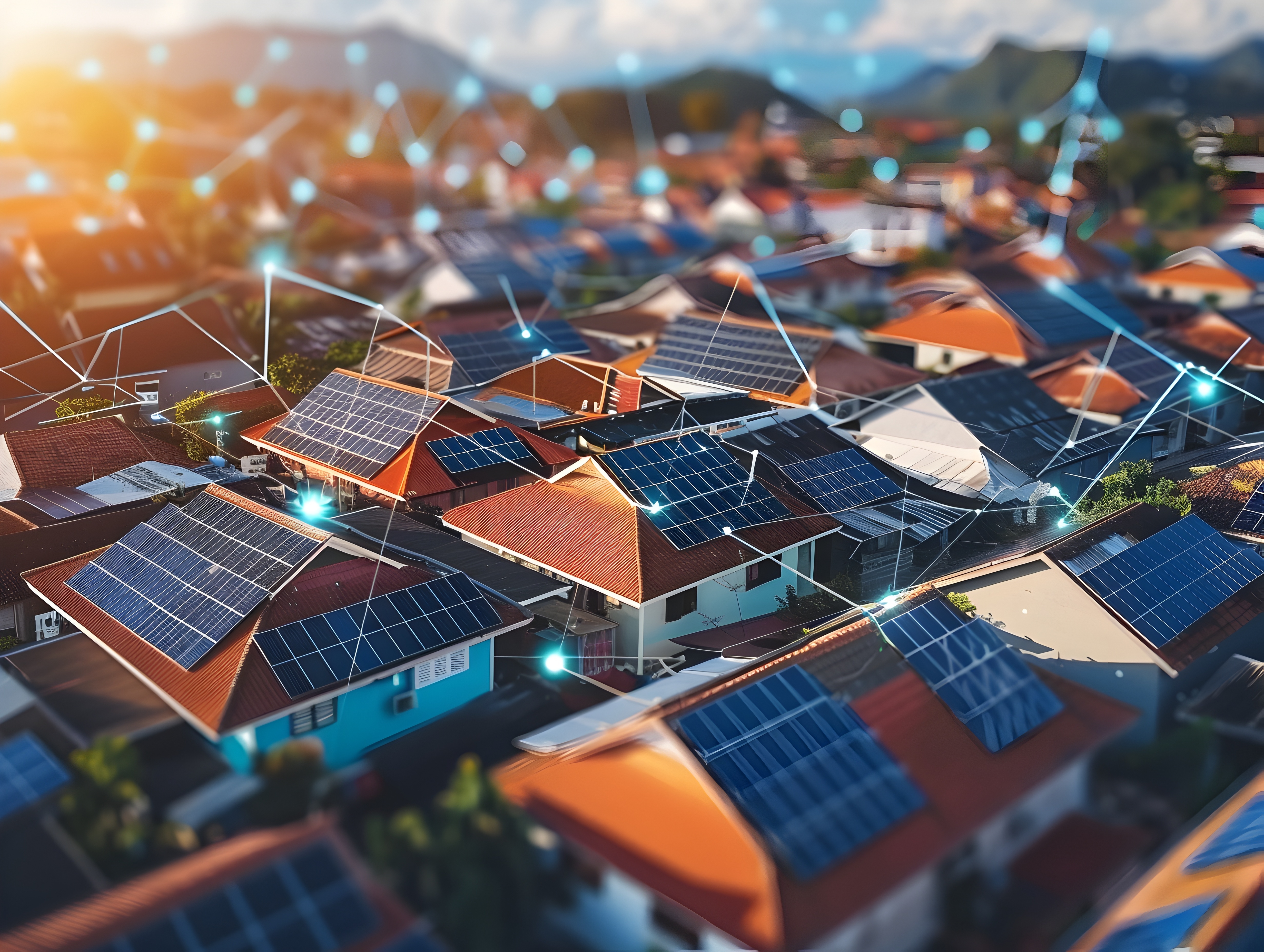
- Research
Digitalisation
Scalable and secure digital frameworks for smart grids
The increased use of renewable energy sources brings with it a need for digitalisation of the grid (by which we mean, an advanced electronic infrastructure that encompasses AI, the Internet of Things and edge computing). This is essential to ensure the coordination of diverse assets, and it demands a major overhaul.
What is the problem?
The problem is that our grids were not designed for a dynamic decentralised electricity feed-in. As households connect rooftop solar panels, generating variable energy according to weather conditions, as well as heat pumps and electric cars, which add up to significant new energy demand, how can the resulting fluctuating power contributions and draw-down be managed?
The current infrastructure allows for power and voltage monitoring only at network nodes, not individual households. While some network operators have completed smart meter roll-out for household monitoring, most still can’t control and regulate the diverse renewable sources and loads connected to their networks. That means there is a risk of local overvoltage (when more solar power is generated than is being used), or undervoltage (when higher load consumption, say by heat pumps and electric cars, isn’t matched by provision). In either case, this mismatch costs money, and can cause grid instability.

How to solve this?
Only through digitalisation can we ensure safe and reliable operation of a grid driven by renewable energy sources. A smart grid infrastructure increases the number of controllable and measurable devices in the energy system, providing added flexibility by making it possible to control and sense remote access, and to integrate objects through computers in real time. A digital infrastructure also enables end users to optimise their consumption and reduce costs.
This transformation will revolutionise current functions related to monitoring, planning and control, and management. For network operators, it enables more accurate assessment and anticipation of the actual use of system components. The energy companies that use data, better algorithms, predictions and control methods enjoy a more cost-effective infrastructure, with lower maintenance needs, and better economic performance.
Where do we come in?
While the need is pressing and the benefits are clear, grid modification is difficult and expensive. We want to help operators overcome the challenges of digitalisation, by designing digital architectures that can enable the realisation of smart grids that can handle the changing energy landscape.
- Challenge: Operators lack skills and strategic planning to digitise their networks.
Solution: Architectures that are scalable, modular and easy to implement.
- Challenge: Operators are overdependent on sensors to provide information about all grids, and then to respond to complicated scenarios in a timely and effective manner.
Solution: Enable communication between devices and operator assets, through unified communication protocols and standards.
- Challenge: More devices mean more endpoints for cybercriminals to exploit, potentially exposing sensitive data.
Solution: Create architectures that are secure by design.
- Challenge: Weak partnership between utilities and customers.
Solution: Develop strong pathways for communication and collaboration.